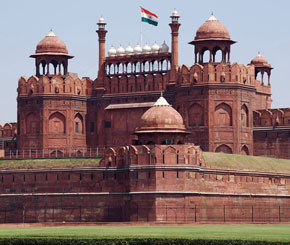News >> >>
Domiciles of patriotic pride
By siliconindia
|
Saturday, 13 August 2011, 00:06 IST
Bangalore: India finally accomplished in winning back its freedom on 15th August, 1947, after more than two hundred years of British rule. All the patriotic hearts rejoiced at seeing India becoming a sovereign nation and the triumph of hundreds and thousands of martyred souls. The nation was reborn and it was a new beginning. The only fact that scarred the happiness was that the country was divided into India and Pakistan and the violent communal riots took away a number of lives. It was on the eve of 15th of August, 1947 that India tricolor flag was unwind by Jawaharlal Nehru, the first Prime Minister of India, on the ramparts the Red Fort, Delhi.
"At the stroke of the midnight hour, when the world sleeps, India will awake to life and freedom. A moment comes, which comes but rarely in history, when we step out from the old to the new...India discovers herself again.", Jawaharlal Nehru
Listed below are a few places that ignite a feeling of patriotism in every Indian's heart.
Red fort
 The Red Fort usually known as Lal Qil'ah or Lal Qila is a 17th century fort complex constructed by the Mughal emperor Shah Jahan in the walled city of Old Delhi that served as the residence of the Imperial Family of India. It also served as the capital of the Mughals until 1857, when Mughal emperor Bahadur Shah Zafar was exiled by the British Indian government. It was designated a UNESCO World Heritage Site in 2007. The Red Fort is one of the most popular tourist destinations in Old Delhi, attracting thousands of visitors every year. The fort is also the site from which the Prime Minister of India addresses the nation on 15 August, the day India won independence from the British. It also happens to be the largest monument in Old Delhi.
There was a time, when more than 3,000 people lived within the premises of the Delhi Fort complex. But after the Sepoy Mutiny of 1857, the fort was captured by Britain and the residential palaces destroyed. It was made the headquarters of the British Indian Army. Immediately after the mutiny, Bahadur Shah Zafar was tried at the Red Fort. It was also here in November 1945, that the most famous courts-martial of three officers of the Indian National Army were held. After India gained independence in 1947, the Indian Army took control over the fort. In December 2003, the Indian Army handed the fort over to the Indian tourist authorities. The fort was the site of a December 2000 attack by terrorist group Lashkar-e-Toiba which killed two soldiers and one civilian in what was described in the media as an attempt to derail the India-Pakistan peace process in Kashmir.
The Red Fort usually known as Lal Qil'ah or Lal Qila is a 17th century fort complex constructed by the Mughal emperor Shah Jahan in the walled city of Old Delhi that served as the residence of the Imperial Family of India. It also served as the capital of the Mughals until 1857, when Mughal emperor Bahadur Shah Zafar was exiled by the British Indian government. It was designated a UNESCO World Heritage Site in 2007. The Red Fort is one of the most popular tourist destinations in Old Delhi, attracting thousands of visitors every year. The fort is also the site from which the Prime Minister of India addresses the nation on 15 August, the day India won independence from the British. It also happens to be the largest monument in Old Delhi.
There was a time, when more than 3,000 people lived within the premises of the Delhi Fort complex. But after the Sepoy Mutiny of 1857, the fort was captured by Britain and the residential palaces destroyed. It was made the headquarters of the British Indian Army. Immediately after the mutiny, Bahadur Shah Zafar was tried at the Red Fort. It was also here in November 1945, that the most famous courts-martial of three officers of the Indian National Army were held. After India gained independence in 1947, the Indian Army took control over the fort. In December 2003, the Indian Army handed the fort over to the Indian tourist authorities. The fort was the site of a December 2000 attack by terrorist group Lashkar-e-Toiba which killed two soldiers and one civilian in what was described in the media as an attempt to derail the India-Pakistan peace process in Kashmir.
